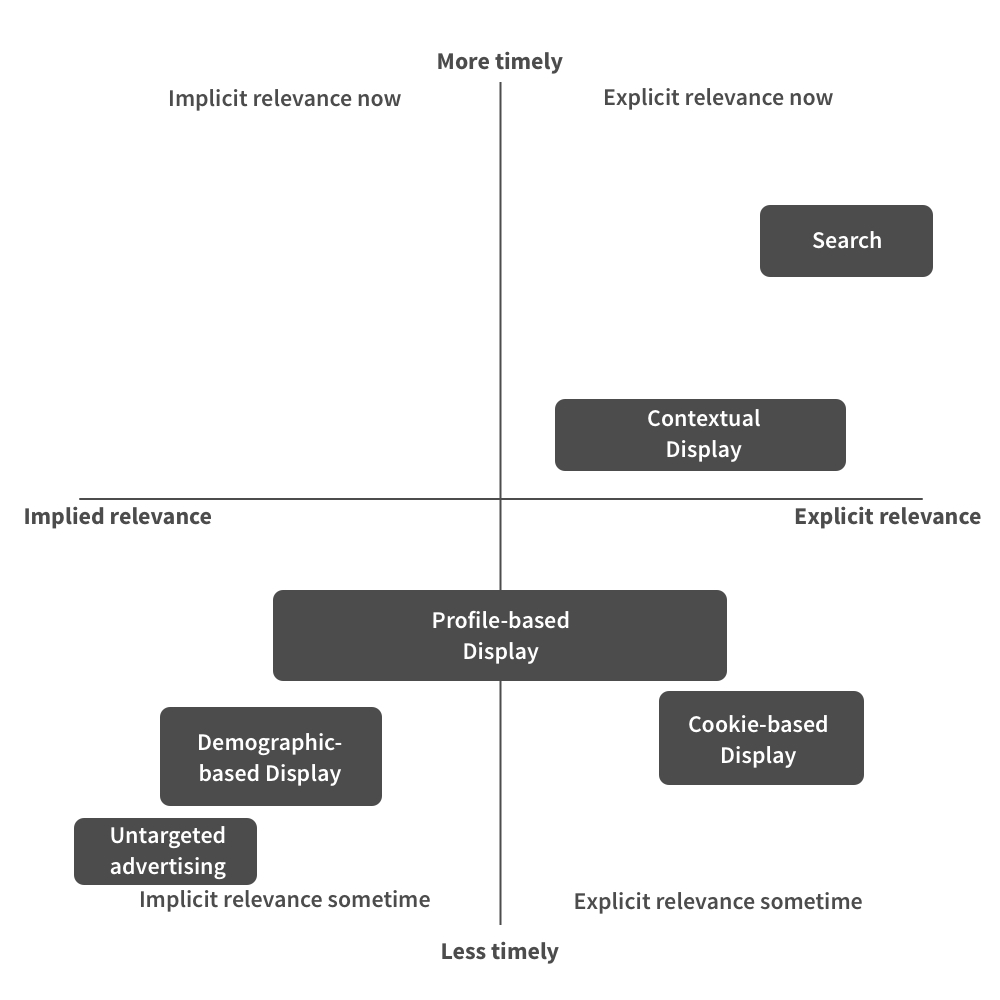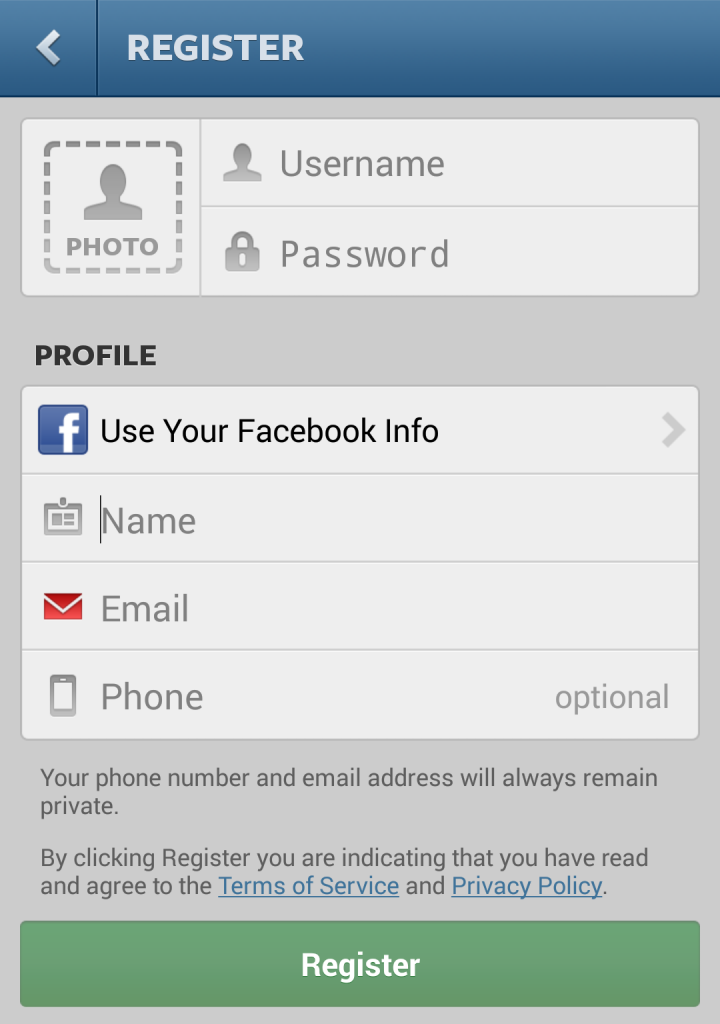Companies participating in the consumer technology market have to generate revenue in one or a combination of these four ways:
- Charging users for hardware
- Charging users for services
- Charging users for software
- Charging advertisers for eyeballs.
If you don’t make hardware, then you’re limited to the other three options. The vast majority of companies that fall into that category are opting for the last option, because it lowers the barriers to entry for users, but perhaps also because it allows those seeking funding to avoid the difficult question of revenue generation until they have an audience.
The assumption seems to be that, as long as you have eyeballs, you can find a way to turn those into advertising dollars. And that’s true to a certain extent, but the ability of different consumer services companies to make money from advertising depends varies very greatly, in a way that is rarely talked about. This has come up a bit recently in the context of Spotify, because the ephemerality of the content is supposedly poorly suited to advertising. But there’s a much bigger problem that affects not just Snapchat but also many others in the current crop of messaging and photo sharing companies, which is that they know almost nothing about their users that’s relevant to advertisers.
The problem of using Google as an example
This is the problem with holding up Google as the example of a successful ad-funded company. Yes, Google generates almost $50 billion on an annualized basis from advertising, and enormous margins to go with that revenue. Three quarters of that revenue is driven by AdWords-based advertising on Google’s own websites, while a quarter comes from AdSense-based advertising on third-party sites. These advertising types are among the most effective, because they combine the two critical factors for successful advertising: timeliness and relevance:
Search (notably including Google’s AdWords) is the most effective (and lucrative) form of advertising because it combines relevance and timeliness: the ad will be related to the topic the user is searching for now. That combination of relevance and timeliness is extremely difficult to achieve unless you know the user is explicitly interested in a topic at this moment, and search queries are about the only signal you have that perfectly meets those requirements. As a result, it’s also the least intrusive and most welcome form of advertising.
The only other form of advertising I’ve placed in the “explicitly relevant now” quadrant above is Contextual Display Advertising, which uses the context of the page you’re visiting to serve up relevant ads. This therefore scores high on both relevance and timeliness – you’re clearly interested in the topic covered by the page right now – but has a couple of downsides that make it weaker than Search advertising. Firstly, we’ve all seen the awkward contextual ads that would seem relevant or appropriate to a computer but not to a human being. Steven Levy uses the example of garbage bags being advertised to readers of a story about a grisly murder involving garbage bags in his book In the Plex. Secondly, whereas search advertising appears at a moment of decision about what’s relevant, display advertising appears after you’ve made your decision and may already have found what you’re looking for. As such, it’s not bad, but it’s not as good as Search.
Google’s AdSense product actually combines contextual advertising, which is how it started, with cookie-based advertising. Cookie-based advertising has one big advantage over contextual advertising, and that is that it is able to build up a picture of you as an Internet user over time, so it’s not just based on a snapshot of what you’re doing right now. As such, it may be richer, more nuanced and otherwise a better picture of you and your interests than a picture based simply on the page you’re currently visiting. The downside is that it’s historical in nature – all you know is that your user was interested in those things at some point in the past, but you have no evidence of a current interest. As such, it can score higher on relevance (if done well) but will typically score lower on timeliness. Google’s combination of these two allows it to be that much more effective.
Then we have everything else, which I’ve loosely grouped into three categories:
Profile-based Display advertising
By this I mean ads served up to users based on a profile built up over time, mostly through explicit cues. This could be anything from “liking” brands on Facebook to Hulu’s survey-based profiles of its users’ interests. There’s clearly a broad range of this sort of activity, some of which can build up a very useful picture of the user over time, and some of which barely seems to make a dent in relevance. If you’ve ever told Hulu in a survey you’re not in the market to buy a car and then been shown three car ads in a row, you’ll know what I’m talking about. This approach also relies on drawing implications from the explicit information, because users will never supply enough information explicitly to provide a complete profile. In other words, if I “like” one police procedural on Facebook, I might be shown ads for another cop show even though I’ve never explicitly expressed interest in it. Like all display advertising, though, this is an approach that puts ads in places where I likely don’t want to see them, and while I’m doing something else.
Demographic-based Display advertising
For the companies that have no way to explicitly capture information about their users’ interests, the only alternative is to use demographic information to imply these interests. This means using gender, age, location and other similar information which may be supplied as part of the signup process to infer interests in topics commonly of interest to those age groups. Facebook has offered this option to advertisers, who can choose to target only males aged 18-24 in zip code 90210 and so on, though it obviously offers interest-based advertising now too. This approach is necessarily limited because involves inferences and implicit relevance rather than explicit relevance. For some advertisers that’s enough, because they believe their product has broad enough appeal among an age group or gender or geographic location that it’s happy to take this approach. But for many, it’s an inferior approach to targeting. In addition, of course, it has the same limitations as all other display advertising.
Untargeted advertising
It may seem ridiculous to even include this as a category here, but it’s the key issue with Instagram as it currently stands, and Instagram isn’t alone in having this problem. The issue here is that Instagram knows essentially nothing about me or my interests. The signup page looks like this (on Android):
What information is Instagram capturing about me here? Absolutely none that’s helpful in targeting advertising to me in future (which is, of course, hugely appealing if you’re a user going through this signup process). My name and email address are the only pieces of information I will provide here. But there’s not even a space to enter my age or gender, so forget about demographic targeting. Note that Instagram has added a Facebook signup option, which of course would be very much more useful because it would allow Instagram to tap into that profile information. But all the users that signed up before that was an option have provided essentially nothing for Facebook/Instagram to use to advertise to them.
This is arguably the single biggest reason why Instagram has faced such a backlash from users over its advertising. I’ve struggled to find a good example that isn’t too profane, which is telling in itself, but the comments on the ads have been extremely negative and forceful (click through to the image if you don’t mind some strong language). The ads are just not relevant or timely to the large majority of the audience, which means that for all the positive engagement these brands say they’re getting, the backlash against both Instagram and these brands is very strong.
But this problem isn’t unique to Instagram, and it’s arguably an even bigger issue for Snapchat, which does capture a birthday during the signup process but which doesn’t have any way for brands to engage with users today. And there are many other services which suffer from the same problem. The focus in much of the coverage of these companies is on who they compete against from a user perspective, pitting one messaging app against another, or photo-sharing services like Instagram and Snapchat against each other. But the real competition is between each of these companies and others which sell ads, because Google dominates that space, and most of these companies are in a poor position to compete because they have so little data to go on for targeting ads. As Google puts it in its 10-Q for the September 2013 quarter: “We generate revenues primarily by delivering relevant, cost-effective online advertising.” All these companies need to remember that they’re competing with that as much as anything else.


Pingback: Thoughts on Google earnings Q1 2014 | Beyond Devices()